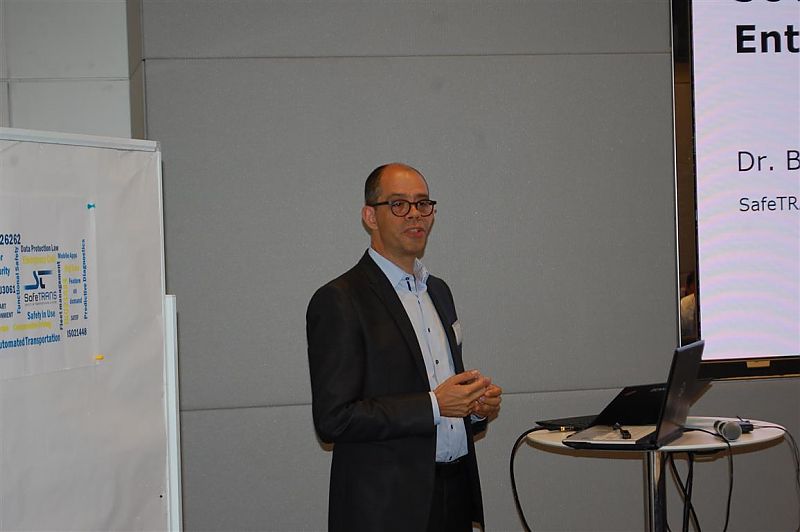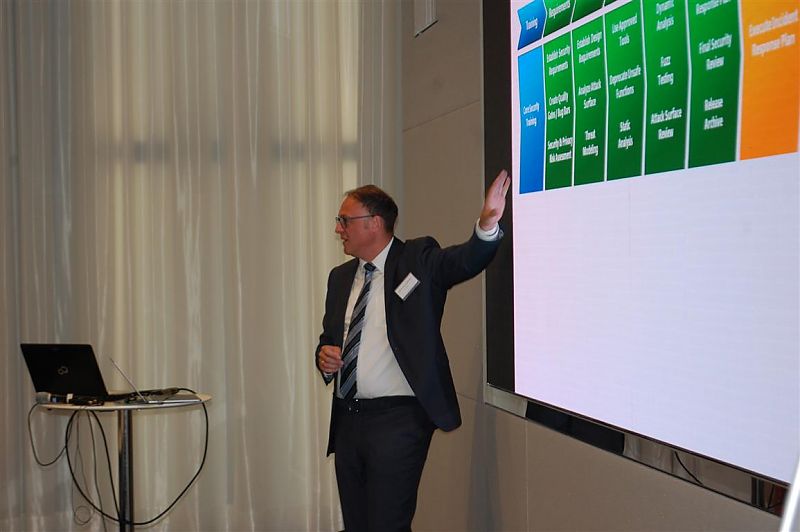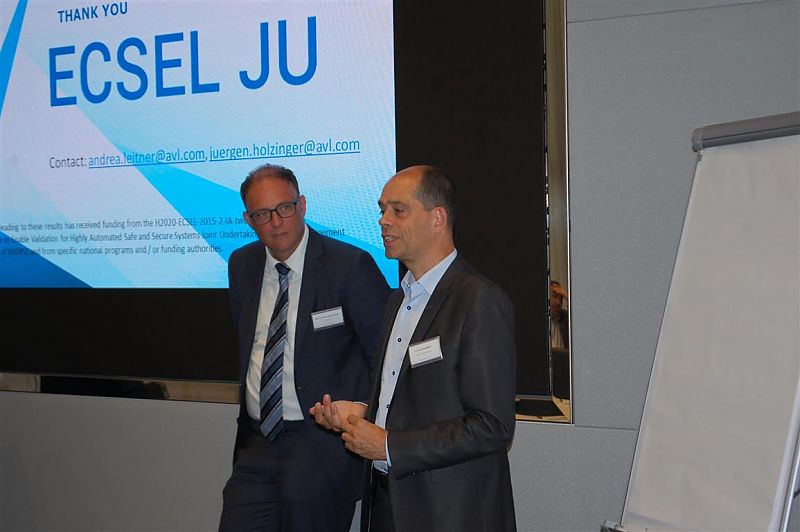
24. SafeTRANS Industrial Day
Datum und Ort
Das Fachsymposium des 24. SafeTRANS Industrial Days fand statt am 13. Juni 2018 in Kooperation mit SIEMENS in der Münchner Konzernzentrale (Werner-von-Siemens Str. 1, Sitzungssaal 3.OG Bau E, 80333 München).
Thema
****
Branchenübergreifende Prozesse, Methoden und Technologien für Safety und Security hochautomatisierter Systeme
****
Am Vormittag und frühen Nachnittag widmete sich der Industrial Day wie gewohnt hochkarätigen Vorträgen und Diskussionen zu Sicherheitsnachweisen, Entwicklung und Test von hochautonomen Systemen. Im Anschluss wurde der Arbeitskreis Branchenübergreifende Prozesse, Methoden und Technologien für Safety und Security hochautomatisierter Systeme, kurz: AK PMT4S&S, im Rahmen des 24. SafeTRANS Industrial Days gegründet.
Programm
| 09:30 – 09:45 | Begrüßung |
| Martin Rothfelder, SIEMENS AG Dirk Geyer, AVL Software and Functions GmbH Prof. Dr. Werner Damm, SafeTRANS |
|
| 09:45 – 10:15 | Introduction PMT4S&S: Formale und technische Abhängigkeiten von Sicherheitsfunktionen und Datenintegrität |
| Dirk Geyer, AVL Software and Functions GmbH Vortragsfolien (passwortgeschützt) |
|
| 10:15 – 10:45 | Herausforderungen für den Security Nachweis zukünftiger CPS |
| Prof. Dr. Hans Joachim Hof, Technische Hochschule Ingolstadt Vortragsfolien (passwortgeschützt) |
|
| 10:45 – 11:15 | Kaffeepause und Networking |
| 11:15 – 11:45 | SOTIF Entwicklungsmethodik |
| Dr. Bert Boeddeker, DENSO International Europe | |
| 11:45 – 12:15 | DevOps Methodik |
Dr. Jürgen Holzinger, Dr. Andrea Leitner, AVL LIST GmbH
Vortragsfolien (passwortgeschützt) |
|
| 12:15 – 12:45 | Diskussion und Ergebnissicherung |
| 12:45 – 14:00 | Mittagspause |
| 14:00 – 14:30 | Virtual Safety Validation of Autonomous Vehicles: From Abstract Graphical Traffic Scenarios Towards Concrete Simulations |
Dr. Tino Teige, BTC Embedded Systems
Vortragsfolien (passwortgeschützt) |
|
| 14:30 – 15:00 | Formalizing scenarios for safety testing of automated driving functions |
Dr. Hardi Hungar, DLR
Vortragsfolien (passwortgeschützt) |
|
| 15:00 – 15:30 | Diskussion und Ergebnissicherung |
| 15:30 – 16:00 | Kaffeepause und Networking |
| 16:00 – 17:00 | Einrichtung des AK PMT4S&S |
| 17:00 | Ende des 24. SafeTRANS Industrial Days |
Bilder






















